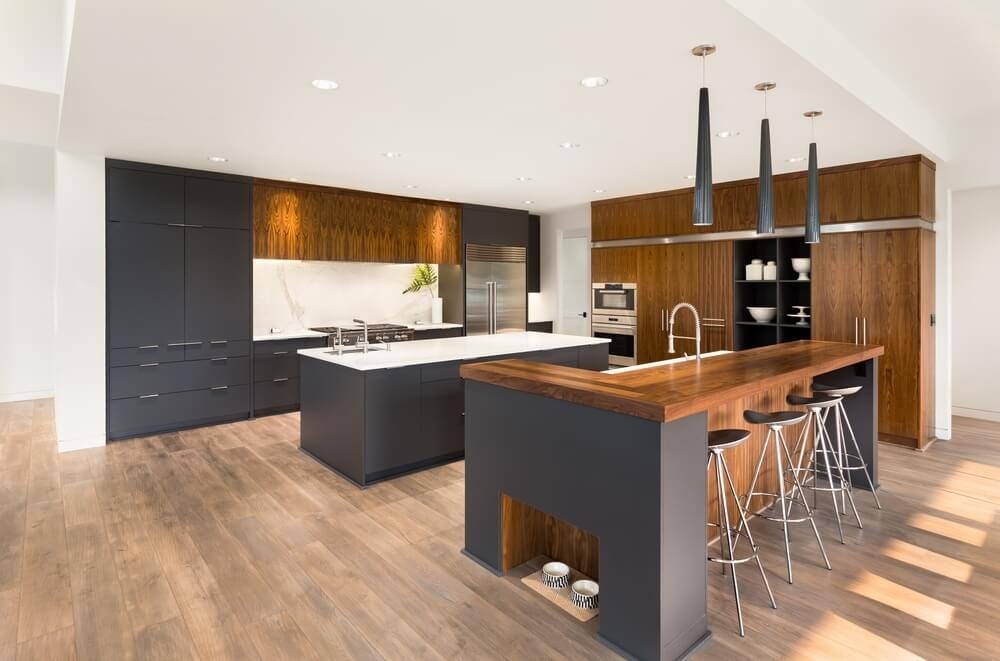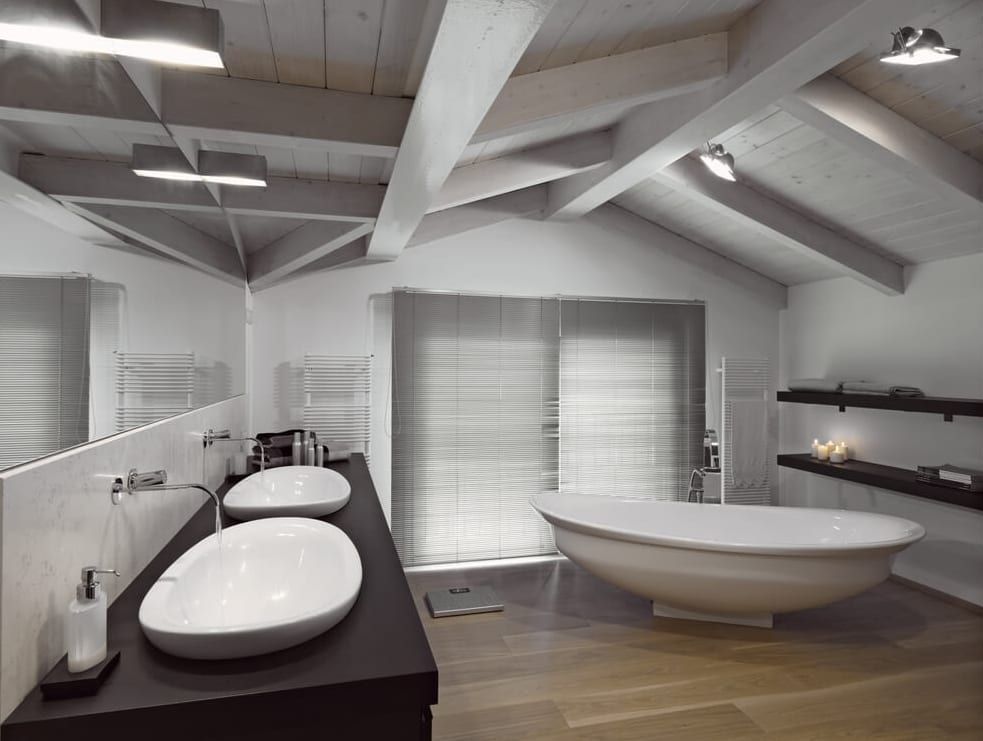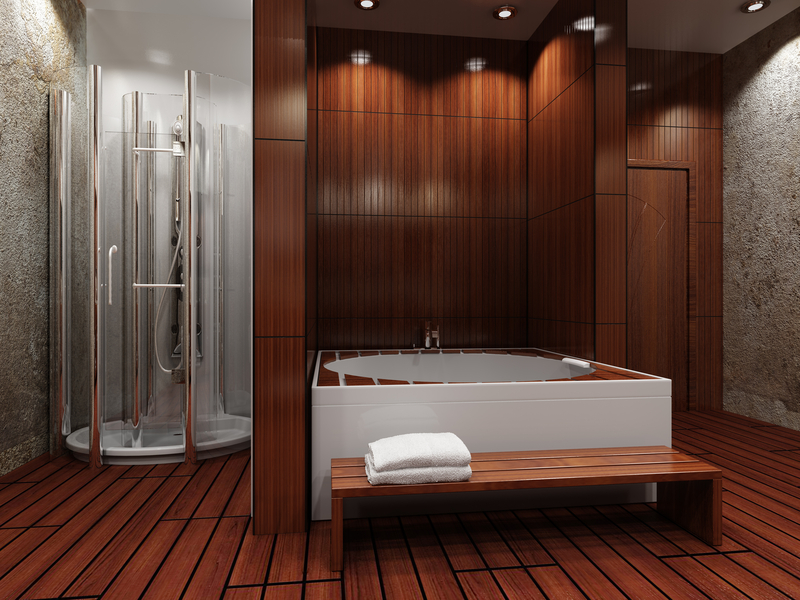Benefits of Wood Floors in Bathrooms and Kitchens
1. Durability: Wood floors in bathrooms and kitchens are known for their durability. With proper maintenance and care, they can withstand high levels of moisture, foot traffic, and other wear and tear. Unlike other flooring options, wood floors can last for decades, making them a cost-effective choice in the long run.
2. Aesthetic appeal: Wood floors add a natural and warm aesthetic to bathrooms and kitchens. They bring a touch of elegance and sophistication to the space, enhancing the overall appearance of the room. Additionally, wood floors come in a wide variety of colors, grains, and finishes, allowing homeowners to choose the perfect style to match their design preferences.
3. Easy to clean: Wood floors are relatively easy to clean, especially when treated with a protective finish. Spills and messes can be quickly wiped away, preventing any long-term damage. Regular sweeping or vacuuming and occasional mopping with a damp cloth are usually enough to maintain the cleanliness of wood floors in bathrooms and kitchens.
4. Hygienic: Wood floors are a hygienic choice for bathrooms and kitchens. Unlike carpets, wood floors do not trap dust, allergens, or odors, making them a healthier option for those with allergies or respiratory issues. With proper maintenance, wood floors can contribute to a cleaner and healthier indoor environment.
5. Versatility: Wood floors are versatile and can easily complement various interior styles. Whether you prefer a modern, rustic, or traditional design, wood floors can adapt to different aesthetics, adding a timeless and classic touch to any bathroom or kitchen.
6. Increased property value: Installing wood floors in bathrooms and kitchens can increase the value of your property. Wood floors are highly sought after by homebuyers, as they are considered a luxurious and high-end flooring option. By investing in wood floors, you can potentially attract more buyers and achieve a higher resale value for your home.
7. Comfort: Wood floors provide a comfortable surface to walk on, especially when compared to harder flooring materials like tile or stone. The natural warmth and slight flexibility of wood can make standing and walking in the bathroom or kitchen more comfortable, reducing fatigue and discomfort.
8. Sustainability: Wood floors can be an environmentally friendly option if sourced from sustainable forests. Look for wood floors that are certified by recognized organizations, such as the Forest Stewardship Council (FSC), to ensure that the wood is responsibly harvested and managed.

Choosing the Right Type of Wood for Bathroom and Kitchen Floors
When it comes to choosing the right type of wood for bathroom and kitchen floors, there are several important factors to consider. These areas of the house experience high levels of moisture, humidity, and foot traffic, so selecting a wood that can withstand these conditions is crucial. Here are some key points to keep in mind when making your decision:
1. Water resistance: Bathrooms and kitchens are prone to spills, leaks, and humidity, making it essential to choose a wood species that is naturally resistant to water damage. Some suitable options include teak, bamboo, and engineered hardwood with a water-repellent finish. These woods have a higher tolerance for moisture and are less likely to warp or swell when exposed to water.
2. Durability: The durability of the wood is another crucial factor to consider, especially in high-traffic areas like kitchens and bathrooms. Hardwood species such as oak, maple, and hickory are known for their durability and ability to withstand heavy foot traffic. They are less susceptible to scratches, dents, and other forms of wear and tear.
3. Maintenance requirements: Different wood species have varying maintenance needs, so it’s important to choose one that aligns with your lifestyle and cleaning preferences. Some woods may require more frequent sealing or refinishing to protect against moisture and stains. Others, like bamboo and teak, have natural oils that make them more resistant to water and require less maintenance.
4. Aesthetics: Consider the overall look and feel you want to achieve in your bathroom or kitchen. Each wood species has its own unique grain patterns, colors, and textures, so choose one that complements your existing decor and personal style. Lighter woods like ash or birch can create a bright and airy atmosphere, while darker woods like mahogany or walnut add warmth and richness to the space.
5. Budget: Finally, it’s essential to consider your budget when selecting the right wood for your bathroom or kitchen floors. Some exotic wood species may be more expensive, while others are more affordable and readily available. Keep in mind that investing in a higher-quality wood may save you money in the long run, as it will be more durable and require less frequent repairs or replacements.
Proper Installation and Maintenance Tips for Wood Floors in Wet Areas
Wood floors in bathrooms and kitchens require proper installation and maintenance to ensure their longevity and durability in wet areas. Here are some tips to consider when dealing with wood floors in these spaces.
Choose the Right Type of Wood: Not all wood species are suitable for wet areas. It is essential to select hardwoods that have a high resistance to moisture, such as teak, oak, or bamboo. These woods are more tolerant of water and less likely to warp or swell.
Proper Subfloor Preparation: Before installing wood floors in wet areas, it is crucial to ensure that the subfloor is properly prepared. The subfloor should be clean, dry, and level to prevent water seepage and damage to the wood. Install a moisture barrier or waterproof underlayment to provide an extra layer of protection.
Use Waterproof Sealants: Applying a waterproof sealant or finish to the wood floors is essential in wet areas. This protective layer helps to repel moisture and prevent water from seeping into the wood. Regularly check the sealant for any signs of wear and reapply as needed.
Adequate Ventilation: Proper ventilation is essential in bathrooms and kitchens to reduce humidity levels and prevent excessive moisture buildup. Install exhaust fans or open windows to allow the air to circulate and dry out any moisture that may come into contact with the wood floors.
Promptly Clean Up Spills: Accidental spills are bound to happen in wet areas. It is crucial to clean up any spills immediately to prevent water from penetrating the wood. Use a soft cloth or mop to absorb the spill and dry the area thoroughly.
Regular Maintenance: Regular maintenance is essential to keep wood floors in wet areas in good condition. Sweep or vacuum the floors regularly to remove dirt and debris that could scratch the wood. Avoid using excessive amounts of water when mopping and use a damp mop instead. Dry the floors thoroughly after cleaning to prevent moisture from being trapped in the wood.
Design Ideas for Incorporating Wood Floors in Bathroom and Kitchen Décor
Wood floors can add warmth, charm, and a touch of natural elegance to any space, including bathrooms and kitchens. While traditionally not the most popular choice for these areas due to concerns about water damage, advancements in technology and sealants have made it possible to install wood floors in wet areas. This section explores various design ideas for incorporating wood floors in bathroom and kitchen décor, offering inspiration to create a unique and inviting space.
Light and Airy Aesthetics
For a light and airy aesthetic, consider using light-colored wood floors in your bathroom or kitchen. Blonde or whitewashed woods can help create a sense of spaciousness, especially in smaller areas. Pair the flooring with light-colored walls and cabinetry to further enhance the open and airy feel. Incorporating large windows or skylights can also maximize natural light, making the space feel bright and inviting.
Rustic and Natural Vibes
To infuse a touch of rustic charm and natural vibes into your bathroom or kitchen, opt for darker wood floors with visible grain patterns. Darker woods, such as walnut or mahogany, can create a warm and cozy atmosphere. Complement the flooring with earthy tones and textures, such as stone countertops or copper fixtures. Adding potted plants or greenery can further enhance the natural ambiance, bringing the outdoors inside.
Contemporary Elegance
For a sleek and contemporary look, consider using wide-plank wood floors in your bathroom or kitchen. Wide-plank floors can create a sense of luxury and sophistication, especially when paired with modern fixtures and minimalist design elements. Opt for hardwoods with a smooth finish and a rich, dark stain for a polished and refined aesthetic. Incorporate stainless steel appliances or chrome accents to add a touch of modernity.
Patterned Floors
For a unique and eye-catching design, consider incorporating patterned wood floors in your bathroom or kitchen. Herringbone, chevron, or parquet patterns can add visual interest and elevate the overall décor. Choose contrasting wood tones or mix and match different species to create a striking pattern. Pair the patterned flooring with simple and understated cabinetry and fixtures to allow the floors to take center stage.
Should You Use Hardwood Floors in Kitchens and Bathrooms?
What about wooden flooring for the bathroom?
Options for Kitchen Flooring and Bathroom Flooring Ideas
Should You Use Hardwood Floors in Kitchens and Bathrooms?
Is Wood Flooring in the Bathroom a Good Idea? coswick.com
Pin on Lmolnar (My All Favorites)
Protecting Wood Floors in Wet Areas Like Kitchens u0026 Bathrooms
Is Wood Flooring in the Bathroom a Good Idea? coswick.com
Related Posts:










